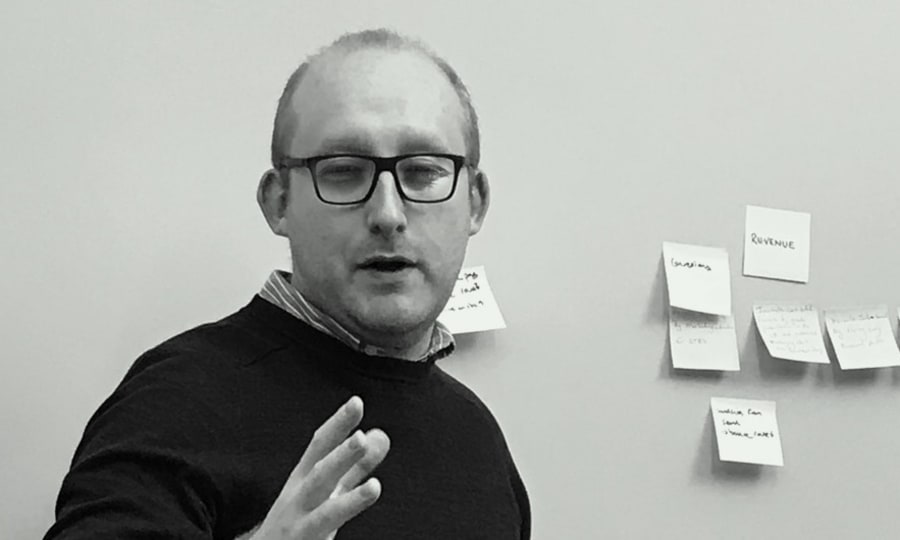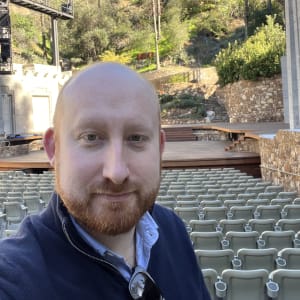One Year On: Reflections on a Year as Made’s Strategy Director
James looks at working with arts and cultural organisations across the world over the past year.
July 06, 2018
It’s been a jam-packed 12 months, which has taken me across the UK and US to work with arts and culture professionals on a range of digital projects.
We have kicked off new design/development projects with Wales Millennium Centre, the Royal Opera House, and Roundabout Theatre in New York.
In what I can only assume is a bonus for long service, other members of the team have enjoyed sunnier climes and started new projects with LA Opera, Melbourne Theatre Company, and Orlando’s Dr. Phillips Center for the Performing Arts.
Having said that, I’ve also been to arts and technology conferences in London, Belfast and Memphis, and I’m preparing for my first Tessitura Learning and Community Conference in Orlando in July, so I’ve had my fair share of Guinness, barbecue and sunshine too.
As well as design and development projects, I’ve been working on some standalone strategy and consultancy projects that have looked at new ways of digital working. These have included a joint project with Indigo on marketing/audience development collaboration among the NewcastleGateshead Cultural Venues, and another project working on digital content strategy with the London Symphony Orchestra.
The projects we’ve been involved in over the last year have been sweepingly broad in scope, working with arts and cultural organisations across the UK, US, Canada, and Australia on new web designs, feasibility studies, content strategy, systems integration, event discoverability, and more.
There are some common themes that have bound many of these projects together, with similar conversations echoing across clients, countries and continents, and it’s interesting to reflect on what some of these are:
- Arts and cultural organisations are grappling with how they can tell their broader institutional story through their digital channels. I’m going to be addressing this subject at the AMA Conference in Liverpool (UK) in July, in a session titled “Mission Driven Digital”. This is a term I use to describe the effective use of digital technology to promote and enable the whole mission of the organisation, rather than simply maintaining a narrow focus on ticket and subscription sales. It requires a broader vision for planning and measuring success in digital activity, as well as a collaborative approach across different teams, and we are starting to see more innovative organisations focus on this as they roll out new digital strategies.
- We’ve spent a lot of time this year working on what we really mean by mobile first when it comes to ticketing the arts and culture. As a sector we have failed over the last half-decade to move beyond the cosmetic changes needed to make our ticketing paths fit onto mobile screens. All we’ve done is essentially take the well-worn online ticketing path — designed desktop-first at the dawn of the age of web 2.0 — and squished it down to fit on the screens in our pockets. For a genuinely mobile first experience, we need to consider the purpose and functionality of the ticketing path itself, and be prepared to unburden ourselves of the ticketing orthodoxies we have come to rely on. Jake is talking about this at the upcoming TLCC, in a session called “Reimagining Mobile First” (link accessible to conference attendees).
- We have been thinking about new models for audience loyalty, which harmonise with the digital world rather than work against it. Our analogue models of loyalty require a huge level of workaround online, especially for mobile devices. The continuing value of subscriptions in North America and Australia suggests that audiences are still prepared to invest their loyalty in arts and cultural organisations, but there’s been little shift in the way these subscriptions are processed, with phone and snail mail still forming a huge proportion of subscription sales and renewals. There’s something that goes beyond our current expectations of what digitally-enabled subscriptions and memberships look like for arts and cultural organisations, and we’re thinking hard here at Made about what that might look like.
- We are seeing more organisations rethinking their approach to digital content by taking a strategic, audience-led approach. As form and function increasingly collide, and the number of digital content types expands to include podcasts, longreads, 360 and more, there needs to be a new content discovery and publishing approach that responds to evolving trends in how digital content is consumed. This needs to start with a deep understanding of audiences, their pathways to your organisation and their journeys once they arrive. We need to think about what gets created, but also how it is published, distributed, and how it drives greater engagement.
- This year we’ve also spent many hours designing new personalised and curated ways to better deal with the bread-and-butter ‘product’ of the arts — the events, performances, concerts, exhibitions, screenings, recitals, classes, and more — in a digital world. As personalised experiences become the norm online, arts and cultural organisations need to consider how this affects the way that their audiences want to discover their content and product: through personalised recommendations, push communications and notifications (“Now on Netflix for you”), and easily browsable collections of content and events. Arts and cultural organisations are expert curators of experiences, and this expertise needs to be extended to the digital realm to engage audiences where they now spend a majority of their time.
- Finally, despite the over-hyped GDPR-pocalypse, email remains a vitally important communications channel for arts and cultural organisations, not just for marketing messages but as a way of extending the user journey beyond the website via smart automated messaging. It is most effective when the hand-off between website and email (and back again) is seamless and and well-integrated. Getting it right will lead to higher conversion rates, greater retention, and — most importantly — stronger relationships with our audiences.
Subscribe to the
newsletter
Sign up now to our utterly private, spam-free and occasionally insightful newsletter.




